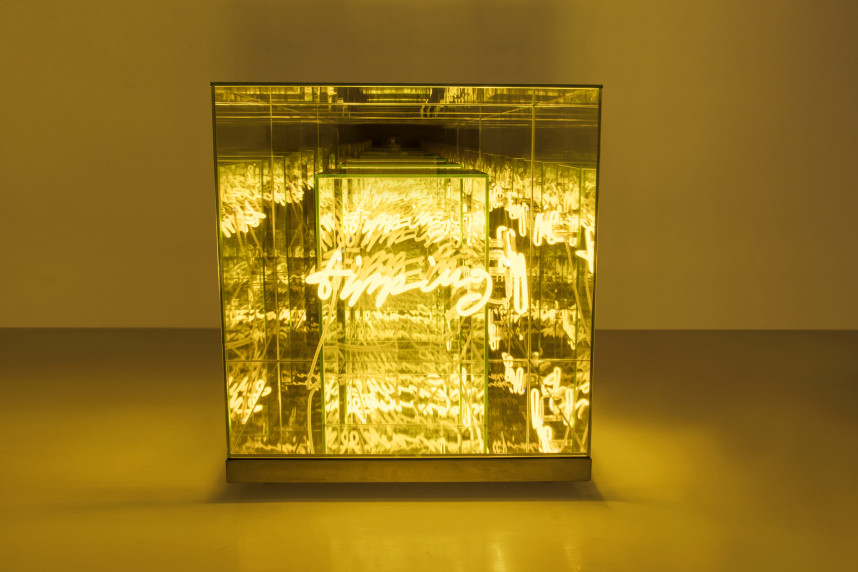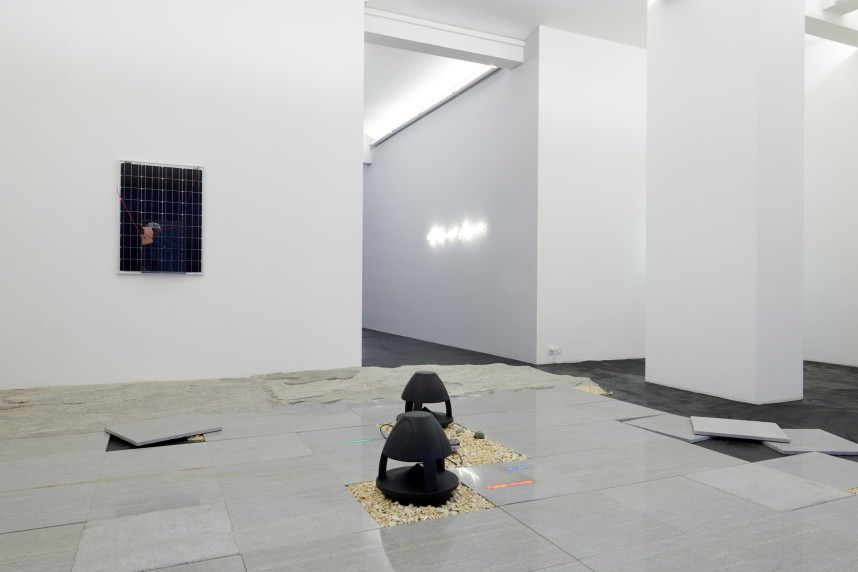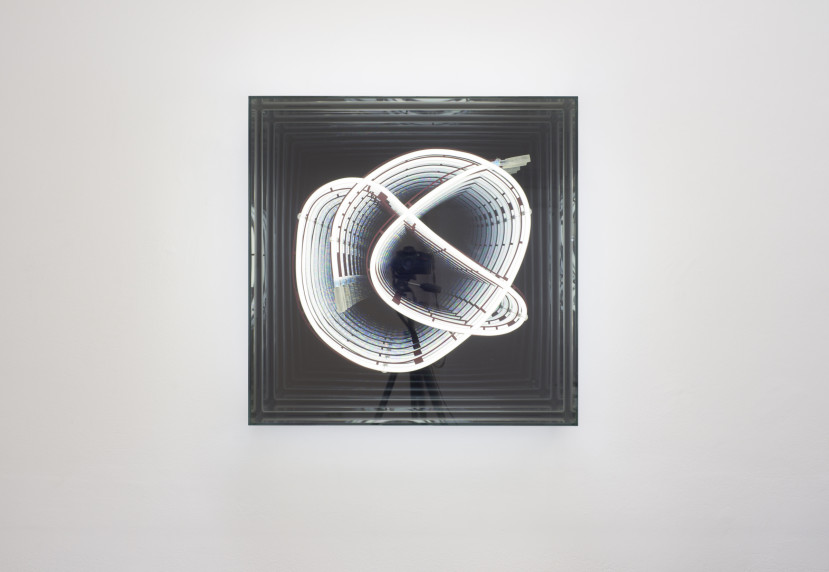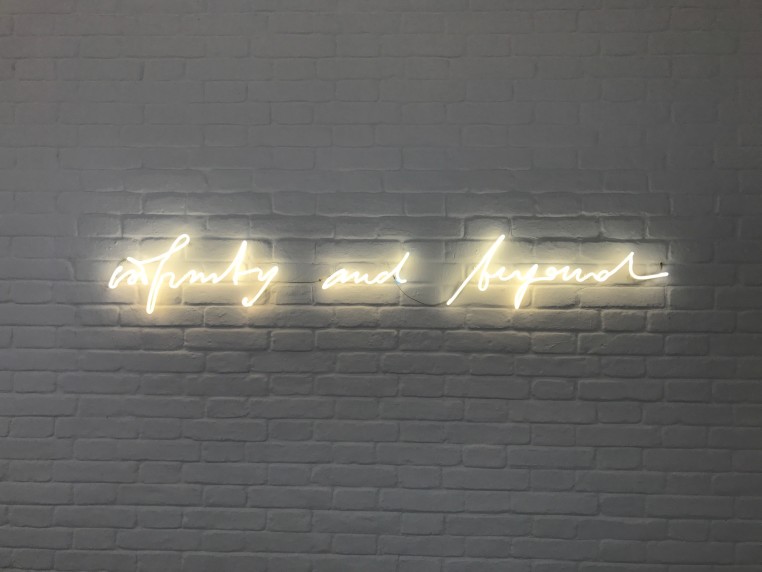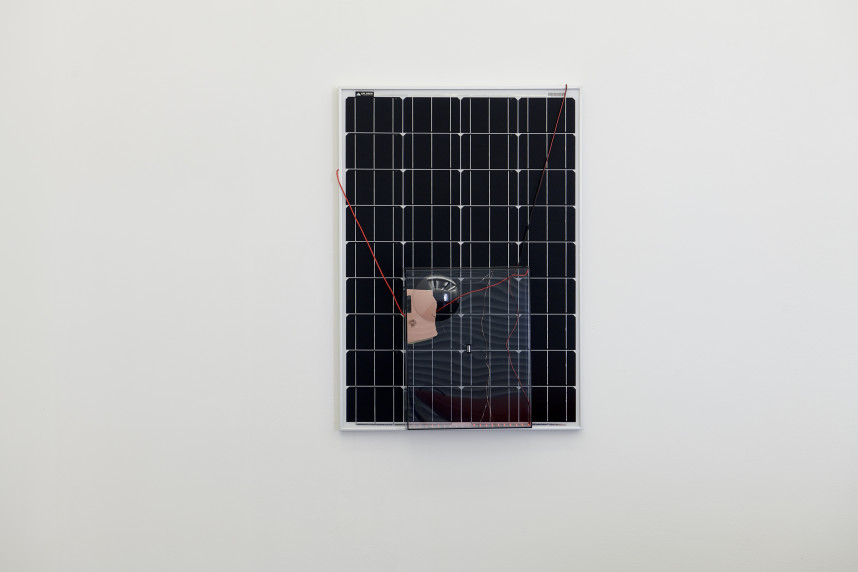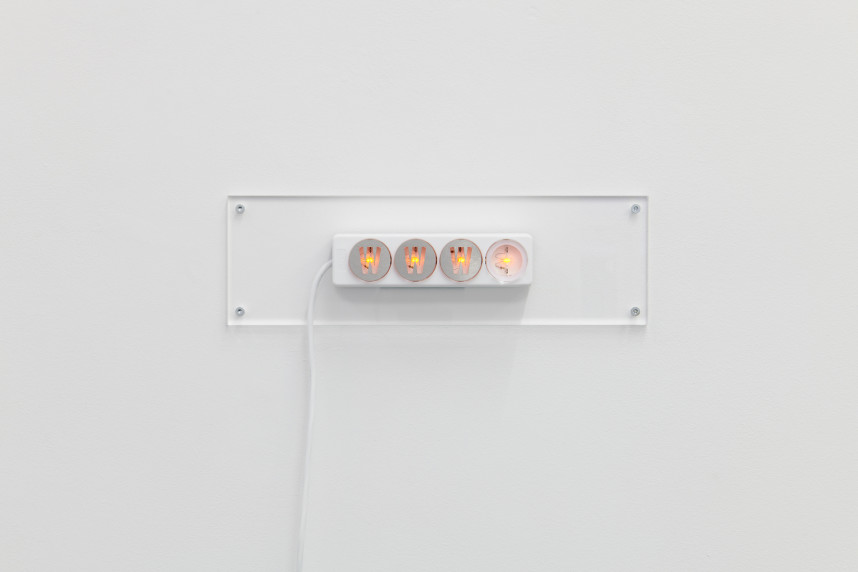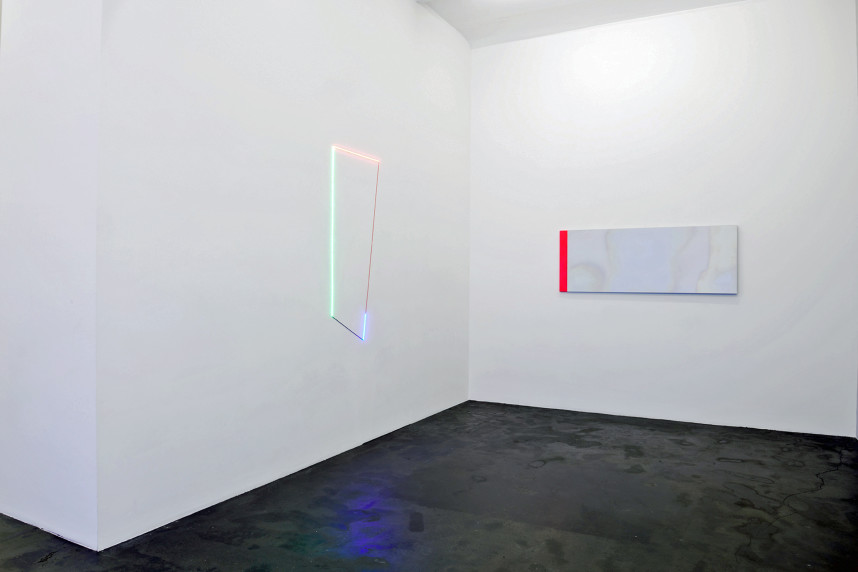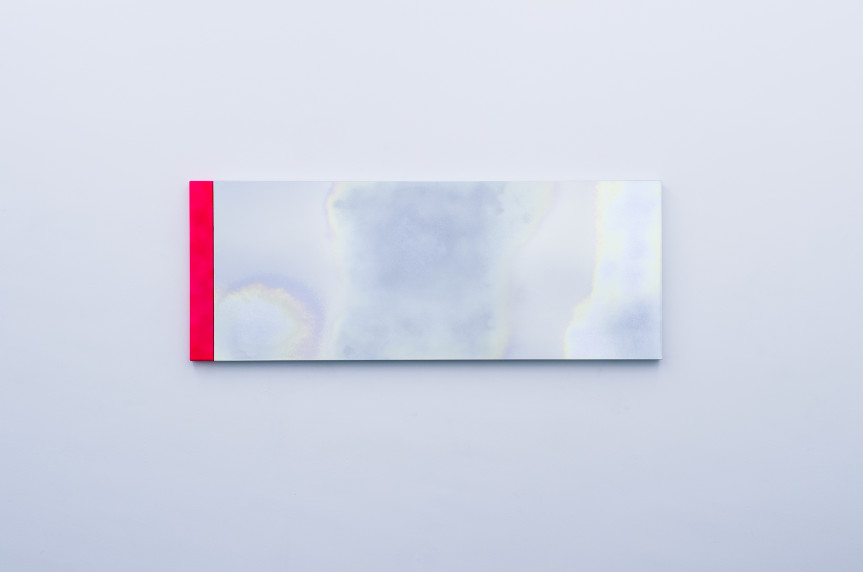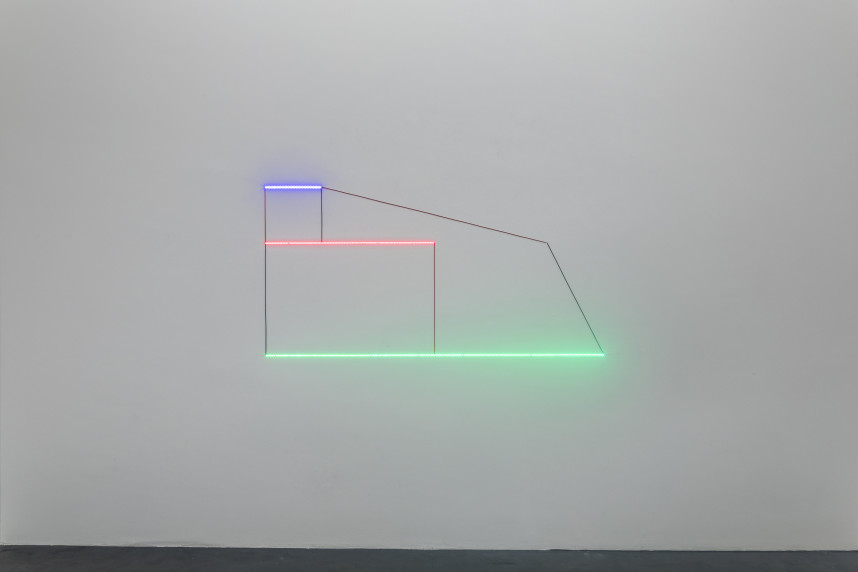Brigitte Kowanz is one of the most important international representatives of light art. Since the 1980s, she combines light and language into memorable pictorial formula, visualizing the potential to submit information of these two basic components as well as the formal aesthetic value of language and the autonomy of the phenomenon of light. Neon – letterings or lines – and mirrors have long been among her most important materials.
Kowanz often uses reflecting surfaces in order to increase the magic attraction of light, for example in the new «Reflects»-series: consisting of aluminum, reflecting foil and transparent varnish, they interact with the ambient light and stress its painterly quality. At the same time, she often uses reflections to integrate viewers and to emphasize the message of her works – like in the almost dizzying floor sculpture «Tipping Point»: in general, the expression refers to a tilting moment in a previously uniform movement, but today is often related to our planet’s alarming climatic changes.
In addition to other current works by Kowanz, we are particularly pleased to present a piece from the 1990s which, consisting of incandescent lamps and distribution plugs, illustrates the beginnings of her engagement with the medium of light.
In Haroon Mirza’s œuvre, light often appears within complex installations made of very different materials. The british-pakistani artist is internationally renowned for orchestrating sensory multi-layered experiences out of electricity, light, sound and objects. Other characteristic features are interactive elements – unlike Kowanz, not by means of mirrors, but rather by, for example, current or light impulses, sometimes also the movement of the viewer, having a changing effect on the work. For example, the «Solar Powered LED Circuit Compositions» in our exhibition react to incidence of light and were also shaped by electricity that flowed through psychoactive mushrooms.
Psychoactive plants also play a role in the site-specific «Platform for Breathing», which Mirza created especially for our gallery. By turning electrical impulses into sound and simultaneously making them visible in differently colored LED lights, the installation exemplifies the approach to a synesthetic perception that Mirza's work often simulates. In this context, the psychoactive plants as intoxicants stand for expanding consciousness.
Finally, the «Light Works» too are about perception – specifically about the physical basis of our color vision. Mirza uses red, green and blue LED strips to illustrate the astonishing essence of the RGB color space: where the glow of the three colors meet, there is a white light.
In this way, our exhibition opens up mental spaces both about the variable appearance of light (in art) and its multi-layered meaning for men and their perception.
Deborah Keller




